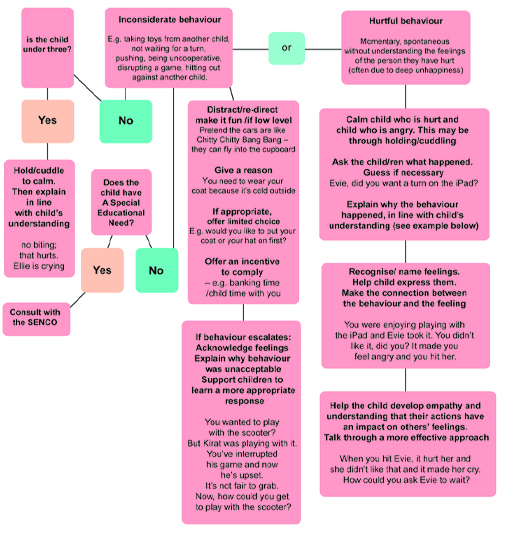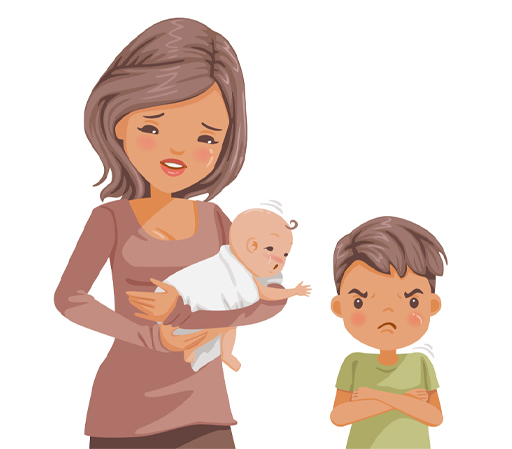5.2 The potential impact on children’s behaviour
Children who are experiencing mental health problems, especially those which are considered ‘externalising disorders’ (such as oppositional defiant disorder) will have accompanying behaviour or ‘conduct’ problems. Disruptive behaviour can be the child’s way of letting adults know that they are experiencing emotions that are overwhelming them. How adults respond to children’s behaviour can help to defuse a situation where a child is displaying what may be regarded as unacceptable behaviour. However, when it comes to young children, there is not a ‘one size fits all’ approach. How we respond to a child’s behaviour will depend on the child’s age and stage of development and the adult’s expectations around what is acceptable.
While there isn’t a single approach to managing young children’s challenging behaviour, there are some principles that should be taken into consideration when responding to a child’s misbehaviour. Look at the behaviour management toolkit in Figure 12, which is a flowchart that illustrates the considerations that need to be taken into account.
Activity _unit3.5.1 Activity 2 Managing the behaviour of children under 5
Look at the following scenarios and use the behaviour management toolkit in Figure 12 to consider your response to how adults – that is, parents, practitioners, teachers or health visitors – can work with the children in each of the examples. Note: SENCO stands for Special Educational Needs Coordinator. They are specialist school teachers who support children with additional needs.
- Mollie is 2. Having been an only child, she has recently had a new sister. Mollie has started biting other children at pre-school.
- Arun is almost 5. Despite his parents and the practitioners in his setting using a consistent approach to managing his behaviour, he is proving very difficult to handle. He constantly interrupts when other people are speaking and disrupts other children’s play, often violently.
- Evan is 3 and a half and his mum has recently died. He used to be a very happy boy, but he has become deeply unhappy and displays his grief-related emotions by being aggressive and angry towards others.
Discussion
In your response, you may have considered the possibility that Mollie’s behaviour has changed because she is feeling that she is getting less attention since her new sister has arrived. And she may have learned that biting someone is a very good way of getting attention. As outlined in the toolkit, holding and cuddling Mollie (rather than responding with anger), while explaining to her why she shouldn’t bite, is the right response. Additional responses and processes are likely to be needed, to ensure the child who was bitten is supported and that Mollie is stopped from biting other children in the future.
At almost 5, Arun is proving resistant to a calm and consistent approach to help support him to manage his behaviour. It may be that he has a mental health condition that is yet to be diagnosed, such as ADHD, that is affecting his behaviour. Although it is very important not to jump to conclusions, as a thorough professional assessment will be needed to confirm a diagnosis, it is important to observe Arun’s behaviour to see if there are any clear triggers or obvious antecedents that occur immediately before the problematic behaviour. It would also be useful to discuss Arun with the setting’s special educational needs coordinator (SENCO). The SENCO will have undertaken training to help support and guide practitioners to understand and manage children with problematic behaviour.
Evan is obviously responding to his bereavement and feelings of grief and loss, and it is often a human response to express such feelings by becoming angry. At 3 and a half, Evan’s feelings will be further compounded by his lack of understanding about death. Evan will need validation, an empathetic approach and other social support to help him cope. Working with his remaining family and main carers will be needed. Evan will benefit from age-appropriate play opportunities and books that tackle the subject of loss and bereavement. There are charities that can help children who have experienced bereavement, such as Young Minds [Tip: hold Ctrl and click a link to open it in a new tab. (Hide tip)] and Cruse.


